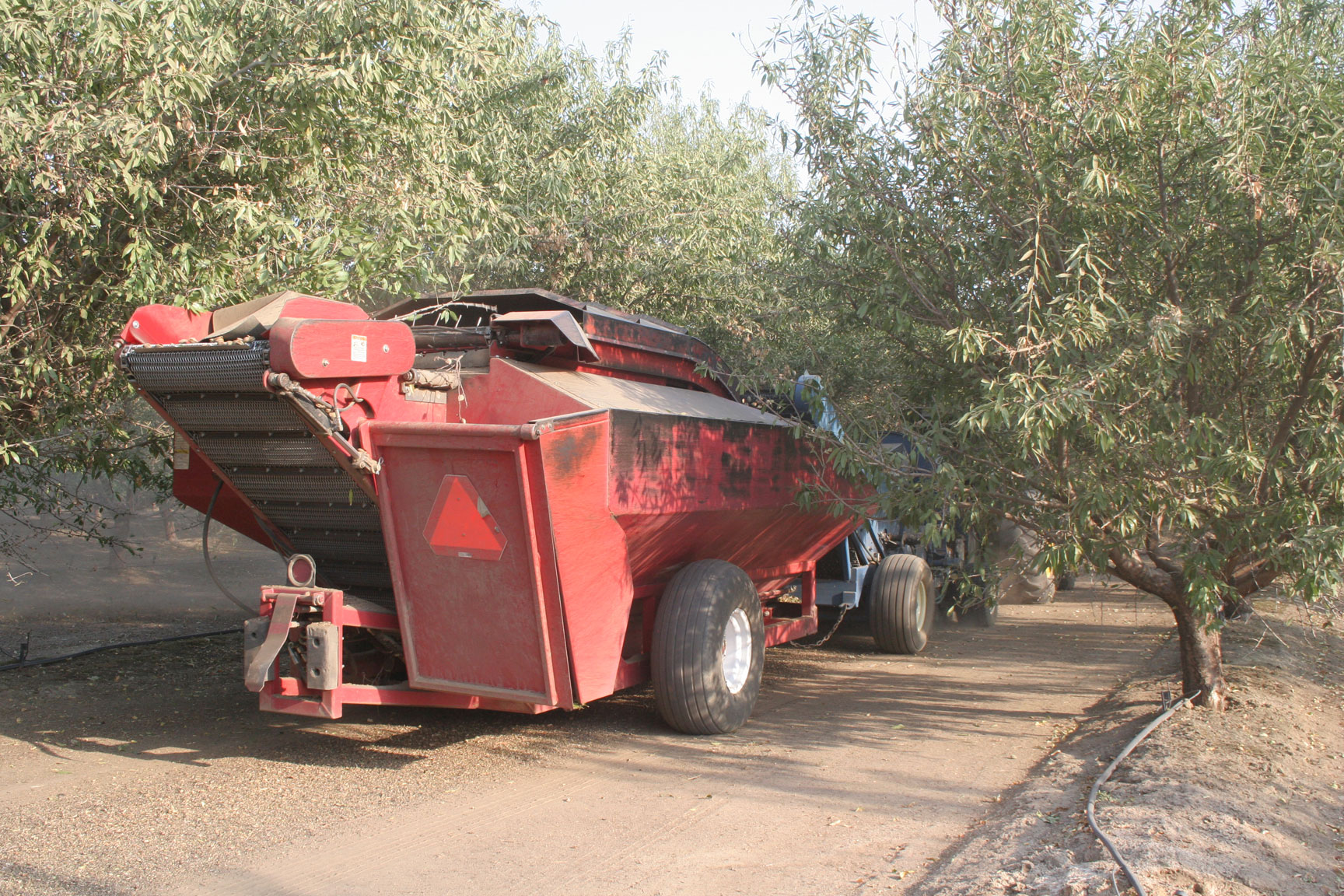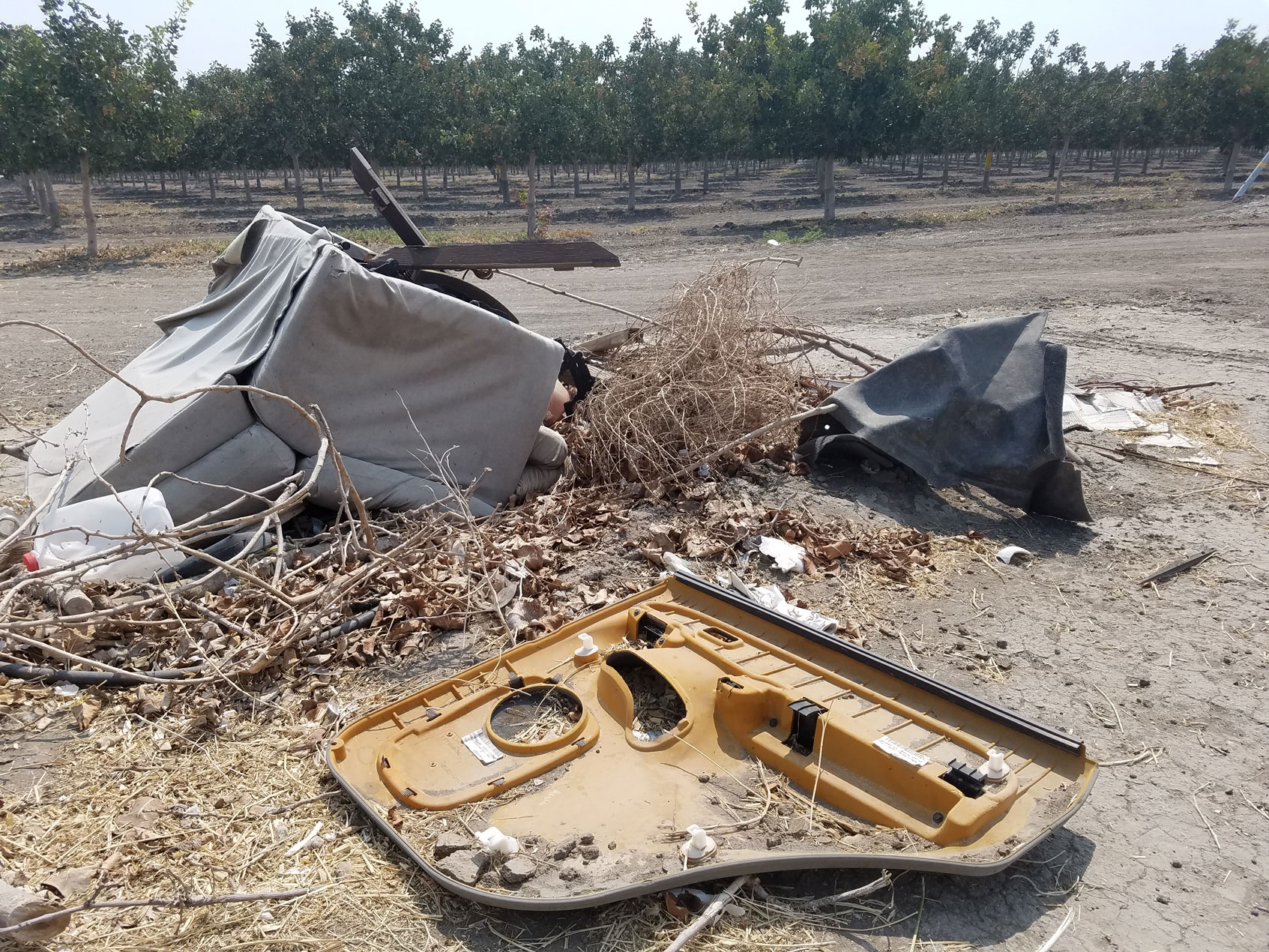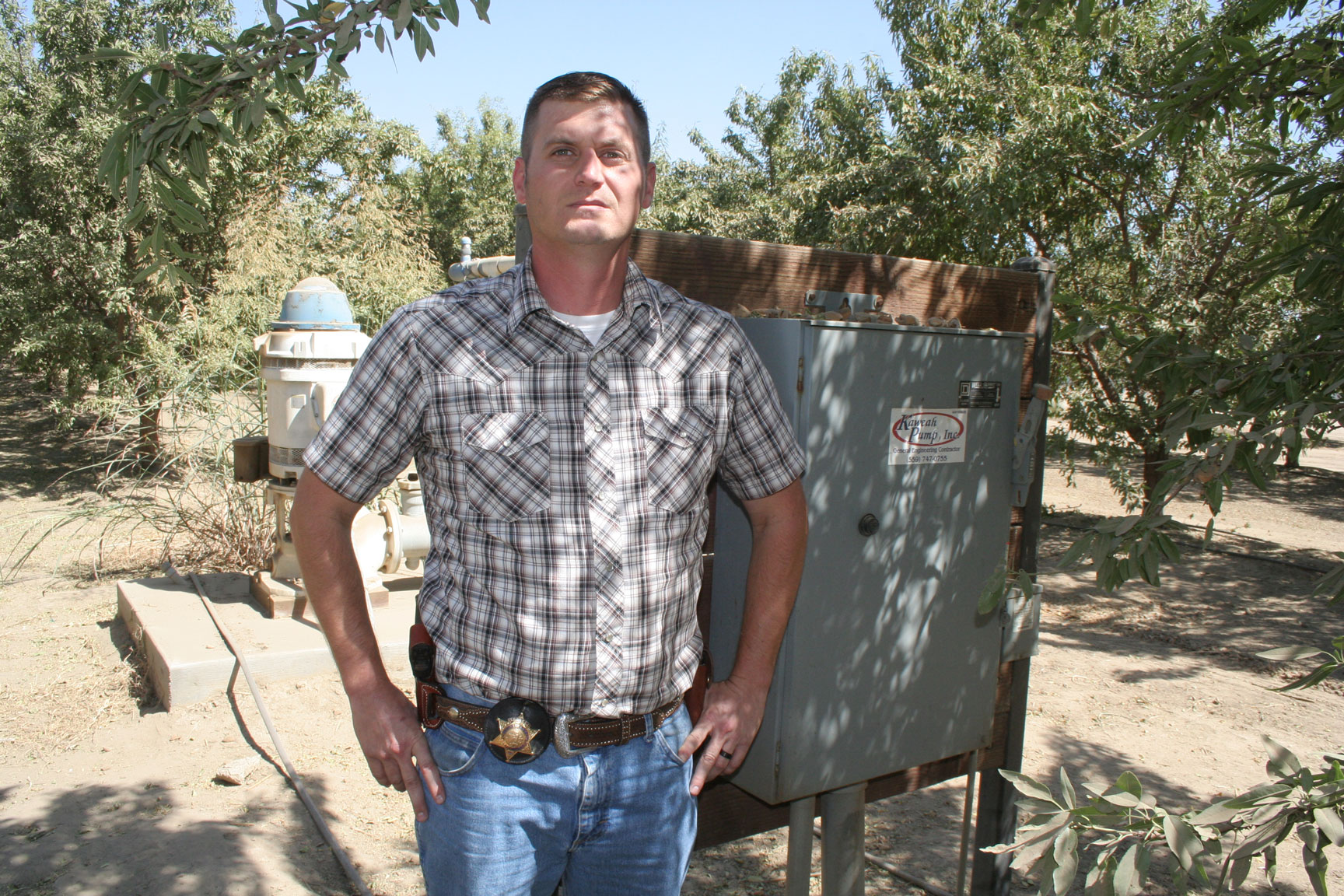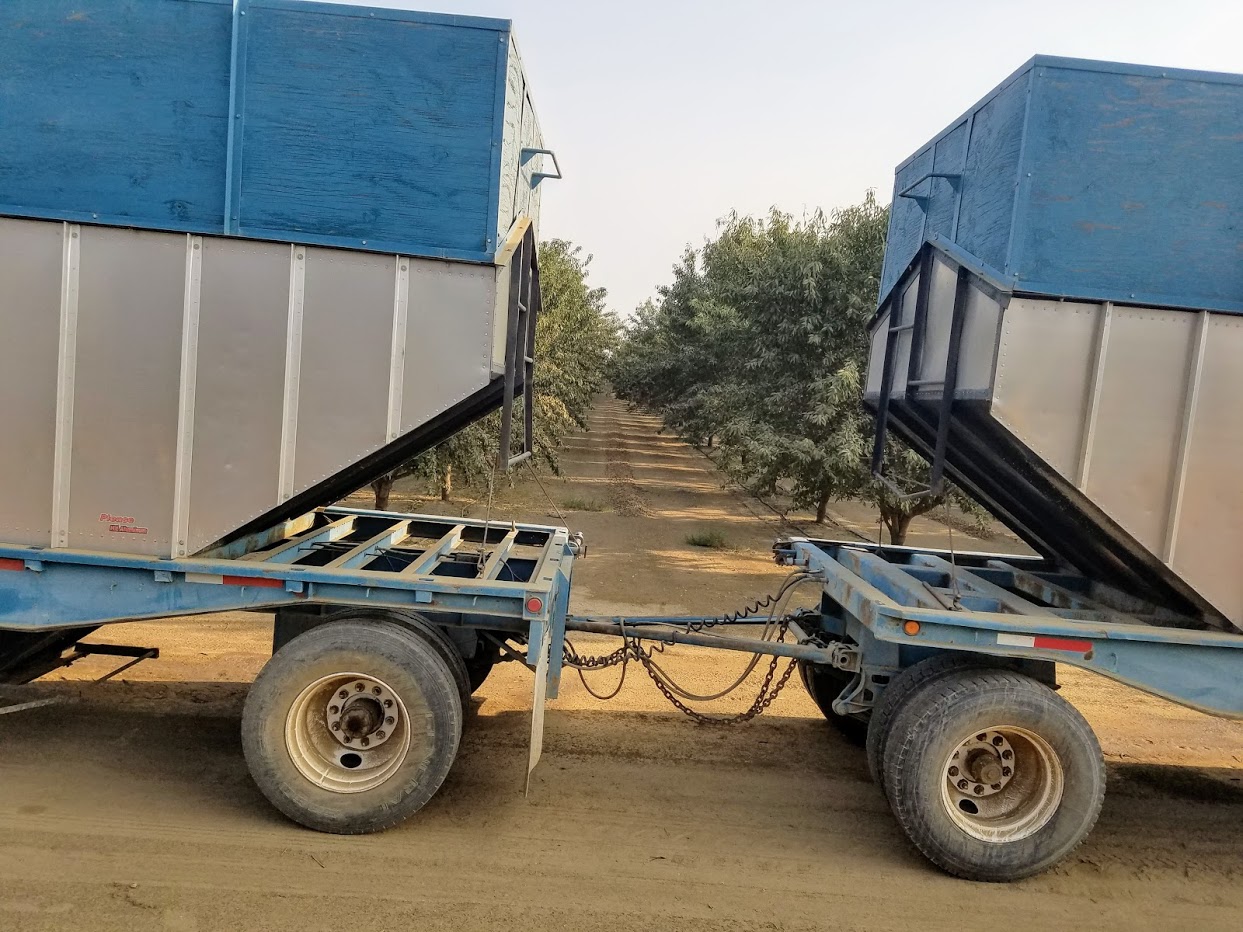
Wondering where to find your stolen tractor, all-terrain vehicle (ATV) or other farm equipment? Try searching Craigslist, OfferUp or Facebook Marketplace.
Rural crime experts say thieves often use those social media sites to sell stolen property.
“Some thieves post photos of stolen farm equipment on those sites, conduct the sale online and then send the buyer to the field to take possession of it,” said Don Stuhmer, president of the California Rural Crime Prevention Task Force (CRCPTF) and a detective with the San Joaquin County Sheriff’s Office. “The buyer never sees the seller and doesn’t even know it’s stolen property.”
Online marketplaces have become one more way thieves are selling what they’re stealing from farmers across California’s Central Valley. Tulare County’s Rural Ag Crime unit alone saw $2.5 million in ag theft last year, said Sergeant Joe England, who heads the section for the Tulare County Sheriff’s Office.
Whether it’s theft, vandalism or illegal dumping on farm property, “the farmer is often left to foot the bill,” England said.
For example, he noted, a theft of copper wire from an irrigation pump might bring the thief $50. But it results in $2,500 in damages to a farmer’s irrigation system.

What’s Hot in Ag Thefts
While stolen truckloads of almonds or pistachios can make headlines, such high-profile cases aren’t what England and Stuhmer see on a daily basis. Far more common, they say, is equipment theft from farms and orchards.
“The bulk of ag crime is stolen ATVs, utility terrain vehicles (UTVs), ditch pumps, trailers, sprayers, tools, even farm trucks,” said Stuhmer.
Thieves often steal to get their hands on equipment metal, such as copper wire in irrigation pumps. But catalytic convertors are also a big market these days. Thieves can steal them in less than a minute and fetch $400 to $600 for each catalytic converter, according to Stuhmer.
“It’s a very easy, quick and lucrative business,” he said.
Common ag crimes also include illegal dumping, bee thefts, homeless camps in orchards, vandalism, fraud and embezzlement. Thieves will break into farm offices or trucks to steal the checkbooks they find there. They can create checks in their own names that way and cash them quickly. Sometimes they’ll engage in “check-washing,” which involves removing the original name from the check and replacing it with their own name. And, of course, if they find credit cards, they use or sell them.
Such crimes add up to “death by a thousand cuts for farmers,” England said. “It’s frustrating for them and for us.”

From an Insurer’s POV
Law enforcement isn’t the only entity focused on stopping rural thefts. California-based The Zenith Insurance Company covers agricultural clients and offers coverage for insured stolen property. The company also has a risk management team that advises clients on how to better secure property.
Tractors, implements and nut-harvesting machines are common targets for thieves, said David Bente, senior ag material damage claims specialist for Zenith. Dollar losses can range from a few thousand dollars for smaller tractors and implements to $100,000 or more for shakers, harvesters and self-propelled carts.
“Many times, theft or vandalism is a crime of opportunity and access,” said Bente.
Equipment can be vulnerable to theft during harvest when it’s left overnight or on weekends in orchards, where it’s not secured by fencing or locked gates.
“We’ve seen equipment stolen from a field or orchard in one part of the state and located in another part of the state, sometimes within weeks, sometimes within years,” Bente said.
Bente and his Zenith team had a GPS unit recovered from a party who had it for sale on Craigslist, where it was being offered for about 10% of its actual price. Similar recoveries have occurred with ATVs and UTVs.
“Many times, when items are recovered and towed, we end up with recovery charges worth more than the items themselves,” noted Bente.

Working to Catch the Bad Guys
Not all online listings are stolen, of course. And the online platforms do work with law enforcement to help trace such postings.
“OfferUp has a special unit dedicated to stolen goods,” Stuhmer said. “We’ve had great success working with them to help figure out where equipment may be. Sometimes they’ll come to us if they suspect someone who’s selling something that might be stolen.”
Stuhmer said the recovery rate for stolen property depends on the area and reporting levels. “The national average for recovering stolen equipment is 20%,” he said. “But where there are ag crime units, the recovery rate is 40% to 50%. We pride ourselves on that and taking care of the ag community.”
Most stolen equipment is located within 10 miles of the original theft, Stuhmer added.
Bente said he currently has over 230 theft units, and the recovery rate is about 6%.
“I will say that with the help of the CRCPTF, the Sheriff’s Office, the California Highway Patrol and the information-sharing among everyone, recovery rates are getting better and better,” Bente said. “It’s great that we’ve been able to partner with all of them, sharing knowledge and learning from each other.”
Like many, Stuhmer is frustrated by the light punishment for ag crimes. Perpetrators often receive probation or small fines and rarely do jail time, he said, especially now that COVID-19 restrictions are limiting the number of inmates in facilities.

What You Can Do
To prevent theft and other criminal activity, Stuhmer, England and Bente urge growers to follow these tips:
Install power interrupt devices.
“Most equipment has a single key to start all equipment made by a manufacturer,” Bente said. “Many times the key is left in the ignition, hidden under the seat or in a cup holder.” That makes the equipment an easy target for theft. Bente advises his customers to install a battery interrupt or Perko® switch. This interrupts the electrical system, cutting power and preventing the unit from starting. Although many stolen units have a shut-off switch installed by the factory, too many owners and operators just don’t use it, he added.
Always lock vehicles, compartments, doors, windows and fuel and oil caps.
Install locking entry gates, yard fences, alarm systems and surveillance cameras to harden the target.
“We’d love for people to put an 18-foot wall around their property, but we know that’s not feasible,” Stuhmer said. But taking extra precautions can help deter criminal activity or help law enforcement find the perpetrators.
Add GPS tracking systems to equipment.
“We have a 100% recovery rate on stolen property that’s equipped with GPS devices,” said England.
Share your suspicions.
“If you see something that doesn’t look right, like taillights at night or unfamiliar tracks, let us know,” England said. “We can set up a patrol to keep an eye on your area.”
Report thefts and other criminal activity to law enforcement.
Stuhmer’s biggest complaint is the lack of communication between ag crime victims and law enforcement. “If we don’t know about it, we can’t do anything about it,” he said. “We need to know. If someone gets six convictions for grand theft, then they’ll see prison time.”











